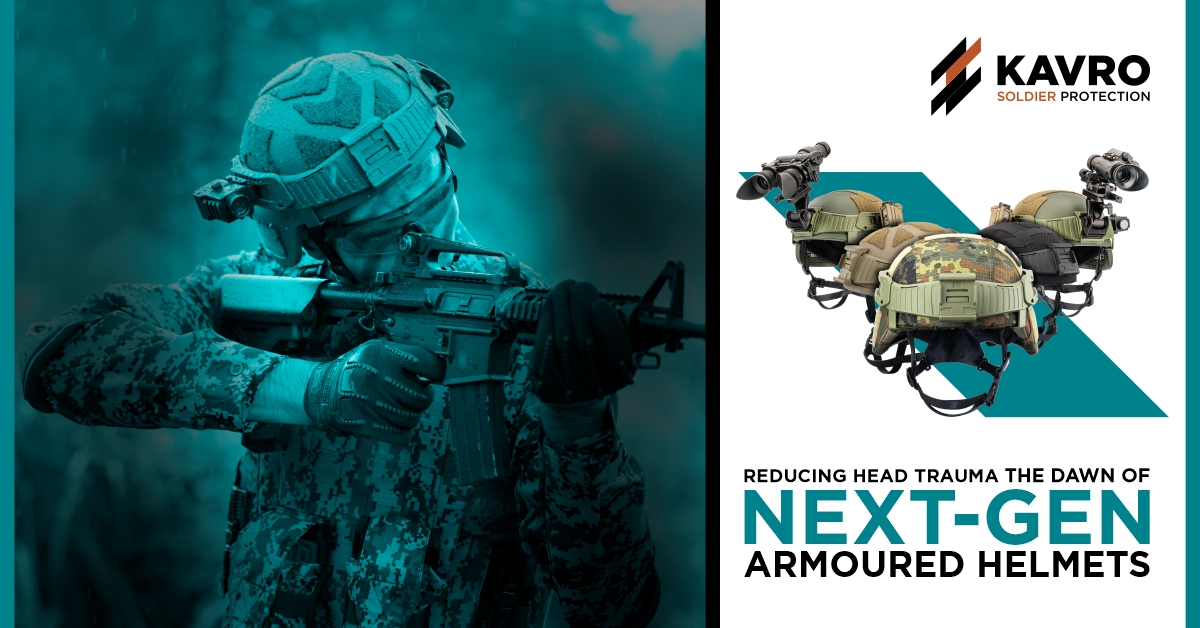Today, combat helmets have transformed from steel pot helmets used in World War II, to helmets made of lightweight composite materials that offer enhanced ballistic protection. They have been relatively successful in reducing head injuries and fatalities due to bullets and fragments. However, they have not been effective in preventing impact-related head trauma.
The high energy impact of a non-penetrating projectile in form of a bullet or shrapnel from an IED blast can cause back face deformation in the helmet shell, which transfers considerable trauma to the head resulting in injuries to the head and skull. This back-face deformation is measured as the maximum displacement caused in a helmet shell upon projectile impact. If the depth of the back face deformation exceeds a critical value, it can strike the skull, resulting in behind-armour blunt trauma (BABT). Possible resulting injuries due to BABT include skull fracture, hematoma, concussion, diffused axonal injury, etc.
For all the armed forces across the globe, BABT has become a major concern. Soldiers may feel that they are lucky to have survived the bullet hit or the blast, but are unaware of the silent wounds left by the BABT impact on their brains. The need of the hour is to design helmets that not only offer ballistic protection but also address the concern of reducing head trauma injuries.
MKU has pioneered in developing the revolutionary Reduced Head Trauma (RHT) Technology used in their flagship KAVRO helmets. The RHT Technology strengthens the helmet shell to protect the head from resultant injuries when hit by a high-velocity projectile. It offers a BABT of less than 10mm which is nearly 40% lower in comparison to standard helmets currently used in combat operations by soldiers. If a soldier wearing KAVRO helmet is struck by a high-velocity non-penetrating projectile on the head, then the maximum helmet shell deformation will be 10 mm. The padding inside the helmet will also absorb the deformation and it won’t touch the skull, thus minimizing head trauma injuries.

Stronger shell - Developed using the revolutionary (RHT) Technology
KAVRO is the only helmet in the world that features a 10 mm BABT, bolt-free shell, increased angle of view and maximum compatibility with modern head-mounted devices used by soldiers. The “No-holes-no-bolts” technology used in KAVRO helmets results in zero compromised areas in the helmet shell ensuring uniform protection across the entire shell. Thereby, ruling out the danger of lethal injuries due to secondary fragments as compared to traditional bolted helmets.
The KAVRO helmet uses advanced composite materials that offer more ballistic, impact and deformation protection while keeping the overall weight of the helmet shell low. A soldier may get used to a heavy armor vest and gear, but keeping the head clear gets difficult in combat with a heavy helmet. KAVRO Helmet lightweight modular padding suspension system (MPSS) provides maximum wearing comfort and stability to a soldier during maneuvers in combat situations.
MPSS is made from allergen-free materials, and does not allow water or sweat retention over prolonged usage and offers consistent heat dissipation, thus maintaining comfortable temperature levels. The snug fit due to MPSS not only offers a better line of sight to soldiers but also helps to mitigate blast and shock wave-induced traumatic brain injuries by limiting head oscillation within the helmet shell.
MACROMATRIX TECHNOLOGY is the way forward towards the next-gen Combat helmet that ensures to minimization of the threat of head trauma injuries, which leave a devastating impact on the lives of soldiers and their families.


 LOGIN
LOGIN









